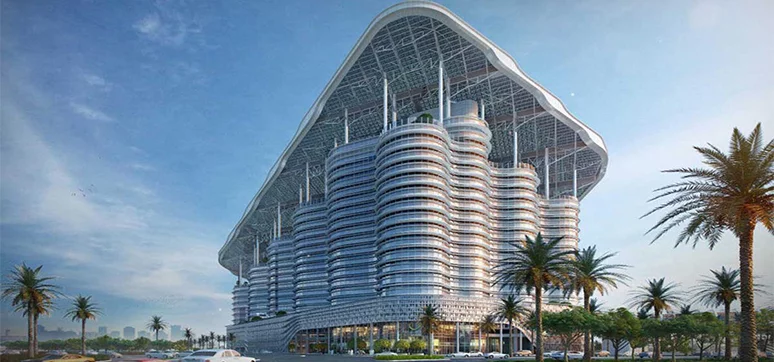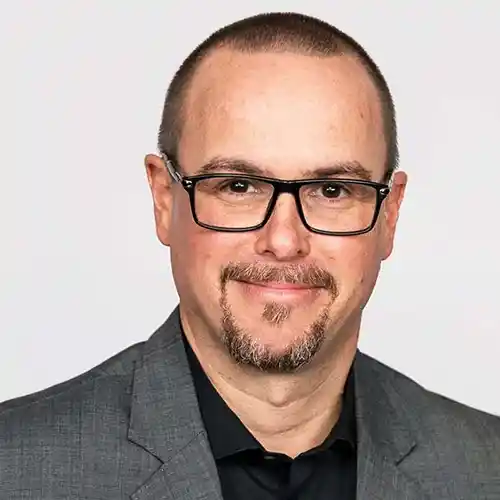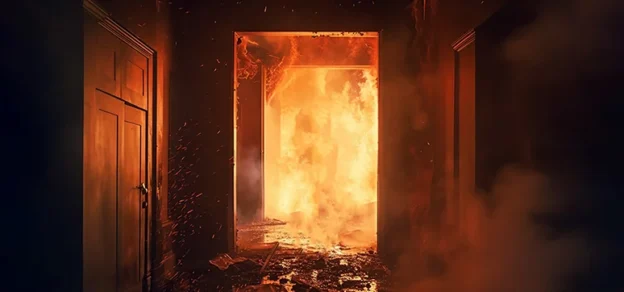Introduction
Over the last years, sustainability became a ‘household’ term in almost every business sector that we somehow grew tired just hearing about it. Mainly because Return-on-Investment-driven markets like most in the Middle East, used this more of a marketing tool than what is supposed to be its real essence. Combined with the commercial pressure on the market happening already before the Covid-19 pandemic, we could hardly feel its genuine implementation at all. Sustainability happens earlier than even choosing a façade material or a design. When you read the comprehensive meaning of sustainability, you may even be surprised at the areas it is covering and how they are connected to each other.
A sustainable design developed by a company out of a sustainable corporate culture, is like a farmer who plows and fertilizes his land to ensure years of fruitful harvesting. He doesn’t focus on a short-term single profitability but he invests in the preparation and maintenance of his land to ensure a long-term productivity. This sustainability culture goes well deeper than the superficial marketing stunts to benefit not only the company’s shareholders but also the employees on a long-term perspective. A sustainable company treats each of its employee like a family member and not merely just an ID number.
They prefer to grow leaders within the company rather than hiring external individuals who may not have the same ethical compass like theirs. All these aspects help us understand sustainability from a wider perspective, subsequently impacting the operational chain of any company.
Role of Façade & Fenestration in Making Energy – Efficient Buildings

The façade serves as the enclosure or ‘skin’ of the building. Compared to a solid wall, the façade is ONE transparent part that shields the habitats from environmental nuisances. The performance of the façade or the window is important, but the interface with the solid parts is of the same significance. While a façade or a window might be a good performing unit, it becomes almost useless if it is not assembled properly. Similarly, a well-executed interface does not improve the performance if the installed materials have poor quality. Together with the HVAC system, the façade forms the most important building part with regards to energy-efficiency. From an investment point of view, the façade is one of the most important building elements that give the building also a face, a Design.
Sustainable and Efficient Façade/Fenestration
First of all, the question is how sustainable a façade can be if the building in which it shall be installed is not sustainable. The sustainability starts with the view on the building’s lifestyle. Construction always utilises resources. It uses and wastes resources at the same time, and therefore a construction should be driven by the conservation of resources. It starts with the planning of the building, the plot itself, the construction, the usage, and the dismantling and recycling of the used materials. Architects adopting this focus on a material’s embodied carbon footprint, indicate sustainability since it covers not only the manufacturing of material but its use, subsequently, its recyclability.
So, to design sustainable façades, we have to look at the environmental impact of the used materials and their expected lifecycle from manufacturing to recycling until it is re-used. In general: using less, but better materials, recycled material and ensuring recyclability after use, sourcing locally, and ensuring low maintenance requirements. Clients have to be aware that this approach has an impact on the cost of a façade or a window. And this impact can only be considered as a saving when we regard the lifecycle of the unit, and not only looking at the short-term purchase price.
Advancements in the Façade Materials and Technologies

Glass applications have made a big step forward. We have better coatings available with higher selectivity, materials are coated and manufactured locally. Light-weight materials, such as GRCs, are becoming more available and are no longer a special solution. We now also see more options for adaptable glass coatings, like electrochromic glass. The photovoltaic (PV) technology is improving and soon we may see transparent PV cells where the architect is not limited anymore.
However, the biggest development for us is the adaptable façades that react to the environment independently. Priedemann is at the forefront of these developments with our ACT façade, a kind of a double-skin façade on-demand and ARKOL, a solar-thermal venetian blind system with embedded photovoltaic. While nowadays façades are still shielding and reflecting energy into the sky – the future façade will collect and use the energy as active skin.
The technology is generally developing towards the digital embedment of the façade. Future façades will collect data to improve usability and adaptability. And who knows? In the same way, in which you can return your fridge or your car to the manufacturer for recycling at the end of its lifecycle, you may also return your façade and ‘exchange’ it with one that meets the latest technical performance envelope. In the future, we may be able to rent or lease a façade, instead of buying it, including full maintenance.
Preferable Façade/Fenestration Materials?
This is probably not easy to answer, but I want to touch one aspect here: The most used façade material is aluminium and there is a continued discussion on the sustainability of aluminium since it is very resource-intensive when manufactured. However, this resource intensiveness can be minimised by up to 95% when aluminium is recycled. This is a huge potential with regards to recyclability but requires careful consideration in the design and specification.
Effective Façade/Fenestration Designs: Role of Software
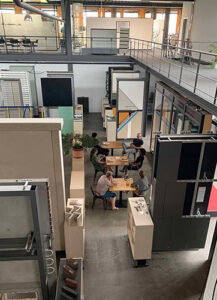
Software plays an important role in every stage. We need software and there are many options used in the market. The software can do everything but we see it as more important to understand and use the communication between and the adaptability of different software rather than focus on one specific software. For example, Revit is used more as a communication tool than design software. Similarly with BIM, there are many requirements and requests in the market and on projects; but we, and our clients as well, realise the limits when it comes to façade design. We are expecting a changing landscape of façade engineering with regards to the digital disruption. Digitalization and parametric design are not new for us. We have been doing it for more than 10 years. In our experience, BIM is just one of the many tools, but our approach is more comprehensive.
Our research focus is on “Intelligent Façade Engineering” (IFE), which is a virtual, integrated procedure for optimised designing, accomplishing, and management of façade constructions in accordance with the method of BIM. To do that, all relevant information is put into a digital database and linked up as a virtual component orientated 3D façade model. The primary function of the parametric volume model is to generate data for detailed design and construction documentation, for order lists and lists of material integrating with controlling CNC manufacturing automates. But even this will not be the end, we collaborate with partners on working on the next steps for the industry. We invest in software, space, and most importantly in human capital to tackle these important tasks.
Indicators of High-Performance Façade/ Fenestration
Some believe it is the U-value, hence, we have challenges explaining to our clients that conditioning the air inside your building is much costlier than investing in intelligent and smart solutions for an active shading solution or, even better, in a smart skin to generate power. In the past, we had the U-value Olympics in Germany: The lower the better, triple-glass, vacuum glass. This shall change to factors like embedded carbon footprint, recyclability, and the integration of adaptable façade solutions. We look forward to a new Olympics, where buildings are competing with each other on which is generating more power.
Effect of COVID-19 on Façade & Fenestration Industry

When it comes to humanity, there is no difference, be it the façade & fenestration industry or any other industry. Our priority is for our family members to be healthy and safe, both the personal family and the Priedemann family. And so far, we are blessed with regard to health. We were reacting quite early and we were able to protect our teams accordingly. Compared to other industries, we might be luckier for the construction industry is usually a big driver of the economy. Most running projects usually continue, which is our global experience during the pandemic. That is why we are currently in a challenging but stable position. We are even hiring at the moment.
Suggestions to Deal with the After-Effects of COVID-19 Pandemic
Well, it is hard not to limit the outlook to the financial topic because that is where we were mostly affected by directly. Besides this, we probably all learned that health and safety are much more relevant than short-term financial benefits. It might be the reason to have a more sustainable look into our investments into buildings.
We also expect some impact on the design itself. Office spaces or entrance solutions might change. Natural ventilation is much more important than we ever expected and contactless interaction and handling within a building might be more important. Last but not the least, we all have learned suddenly that we do not need to jump immediately in an aircraft to attend a meeting. There are many smarter solutions that we realise only during challenging situations at times.
Major Challenges in Façade/Fenestration Design and Applications
Well, the first challenge is to adapt to the post- COVID-19 situation and this may require some creativity and unconventional solutions. Then, we have to design more sustainably: Select solutions that need fewer resources, less energy and make more out of less. Thirdly, I want to mention the huge work and potential which is waiting on existing buildings. There is a massive energy wastage problem with current buildings and with ACT façade, we can have solutions in place to upgrade and enhance installed façades rather than wasting them, which would not be sustainable at all.
Advancements in Automation in Façades and Fenestration

Since we are designing towards an active façade skin, an adaptable façade, or adaptable materials, the advancement will be façade integrated sensors. They are going to collect user data, and with machine, learning capability to adapt to the users’ needs and requirements using analytic algorithms. The system will learn and it will enhance usability and comfort. We can already see this trend in accessory applications, giving a glance at what is waiting for us.
Future of Façades & Fenestration Industry in the Middle East
We are known for our efforts to continuously share our knowledge with our clients and the façade community in the history of façade consultancy the root of this discipline and the reason it evolved. And this was always a matter of quality: Quality of design, the quality of manufacturing, and the installation. And we believe this has become valid and important in a crisis, more than ever. In some countries, buildings, residential towers, became almost a short-lived commodity where long term qualities do not matter. This development does not fit the importance of the façade discipline and it will have an impact on the quality and hence on the sustainability of a building.
Therefore, we believe quality will prevail. What will be designed and what will be built, will focus more on quality and sustainability. In a time where investments are a challenge, owners will have to look on a long-term Return-on-Investment, hence on the lifecycle.
Of course, the pandemic changed almost everything in the market, even national strategically government plans slowed down and changed, and it will take some time until we can see if and how they recover. A crisis also discloses the fitness of a company and we saw Multinational companies stumbling and almost falling within weeks of the lockdown. This might also be applicable to our industry and the survivor will focus on better quality business. We all realised that we need to consume much less than we were used to. We learned to appreciate what we have and save and protect the existing. We expect and are prepared that the same will happen with regards to existing buildings. Smart engineering solutions will be required to retrofit and upgrade existing buildings and façades for another façade lifecycle and Priedemann is ready for such demand.
DEWA Headquarter, Dubai – World’s Largest Zero Energy Building
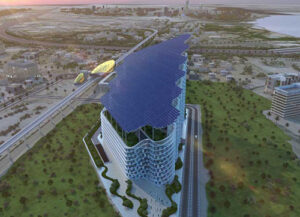
This project is going to be the world’s largest zero energy building equipped with compact solar panels covering an area of 20,000 square metres. It will produce more than 6600 MWh per year of renewable energy. This means the building will generate its entire required power on-site with no grid connection. The photovoltaic solar panels are placed on the roof and integrated into the façade. It is geared to achieve a platinum rating from LEED, as it also intends to have a state-of-the-art building management and control system that will shut down unnecessary usage of lighting, cooling, and water supply automatically.
Quick Facts:
Client: Dubai Electricity and Water Authority
Architect: Obermeyer Middle East
Technical features: Unitised system, BIPV solar panels, GFRC/GFRP fins and Mashrabiya
Scope: Façade and BMU consultancy, concept design, schematic, working and final drawings, performance specification
Status: Under construction
ArKol and DESTINI, Germany – R&D Project
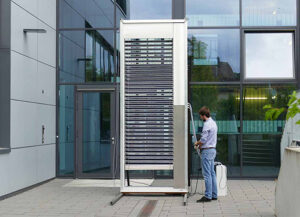
ArKol (2016-2020) – a German research and development project, was meant to create two innovative façade collectors that will give engineers the freedom to design solar architecture: On one hand, the solar strip collector gives a high solar thermal performance while the material and the distance between the strips can be picked from a wide range. On the other hand, solar thermal venetian blinds were developed. They are appropriate within the double skin façades, they can draw in and tilt as the conventional venetian blinds, harvest thermal energy and can reduce the solar heat gain coefficient (g value). Both two innovative technologies use heat pipes to gather the heat effectively.
The subsequent project “DESTINI” proceeds with the development of solar thermal venetian blinds, aiming to demonstrate the system in an operating façade within the building project Spring Park VALLEY. In this, the performance can be assessed with a detailed performance monitoring. The venture began in May 2020 with accomplices from research and the construction industry.
Quick Facts:
Partners: Priedemann Facade-Lab, Fraunhofer ISE, DAW SE
Technical data: Building integrated solar thermal systems (BIST)
Status: R&D in progress, TRL 5/6
Scope of work: Research & Development
